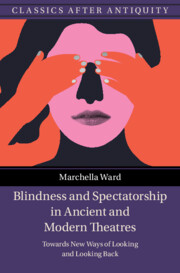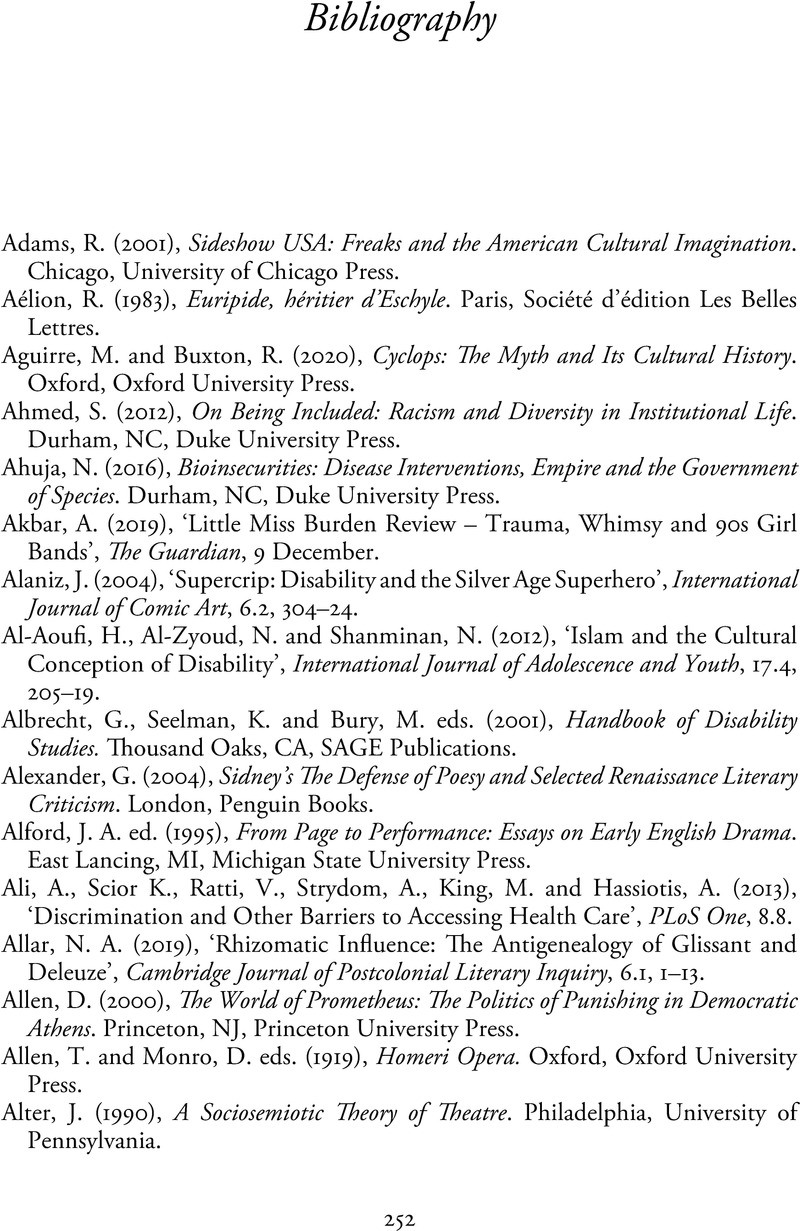 Blindness and Spectatorship in Ancient and Modern Theatres
Blindness and Spectatorship in Ancient and Modern Theatres Book contents
- Blindness and Spectatorship in Ancient and Modern Theatres
- Classics after Antiquity
- Blindness and Spectatorship in Ancient and Modern Theatres
- Copyright page
- Dedication
- Contents
- Figures
- Acknowledgements (Situating Knowledges)
- Notes on the Text
- Introduction: Looking and Looking Back
- Chapter 1 Towards Visual Activism
- Chapter 2 Blindness and / as Punishment
- Chapter 3 Blindness as Metaphorical Death
- Chapter 4 Blindness as Second Sight
- Interlude: Colonial Visions
- Chapter 5 Blindness and Spectatorship
- Conclusion: Assembling the Future
- Bibliography
- Index
- References
Bibliography
Published online by Cambridge University Press: 30 November 2023
- Blindness and Spectatorship in Ancient and Modern Theatres
- Classics after Antiquity
- Blindness and Spectatorship in Ancient and Modern Theatres
- Copyright page
- Dedication
- Contents
- Figures
- Acknowledgements (Situating Knowledges)
- Notes on the Text
- Introduction: Looking and Looking Back
- Chapter 1 Towards Visual Activism
- Chapter 2 Blindness and / as Punishment
- Chapter 3 Blindness as Metaphorical Death
- Chapter 4 Blindness as Second Sight
- Interlude: Colonial Visions
- Chapter 5 Blindness and Spectatorship
- Conclusion: Assembling the Future
- Bibliography
- Index
- References
Summary

- Type
- Chapter
- Information
- Blindness and Spectatorship in Ancient and Modern TheatresTowards New Ways of Looking and Looking Back, pp. 252 - 292Publisher: Cambridge University PressPrint publication year: 2023


